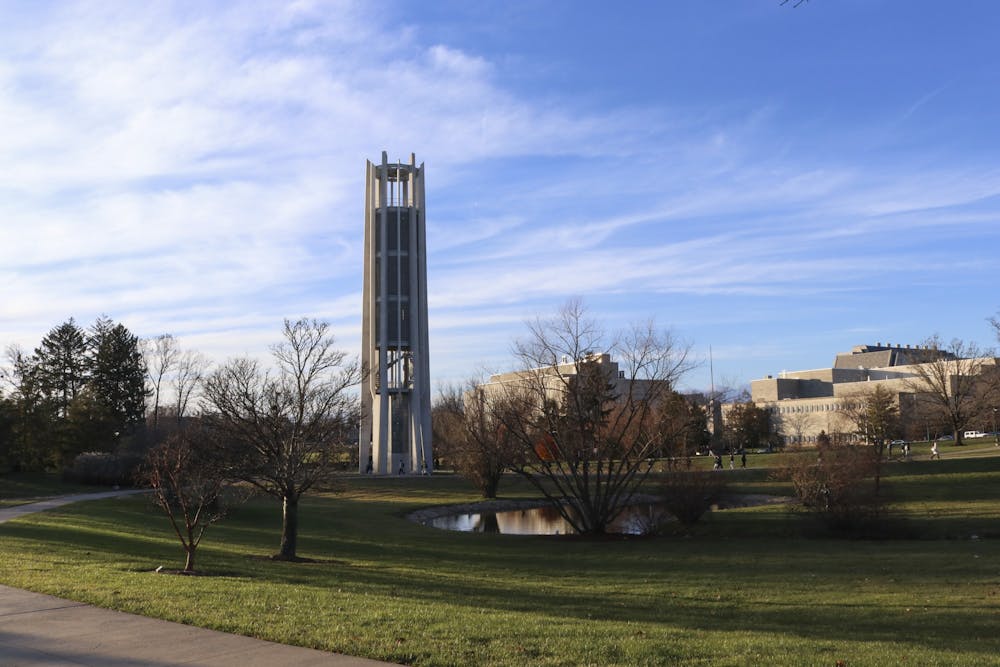Student environmental groups are calling for IU to make a commitment to climate action based on an IU Student Government resolution passed last semester. The groups claim IU is falling behind several comparable institutions.
Many universities within the Big Ten have implemented climate action plans in recent years, including Illinois, Ohio State, Northwestern, Rutgers, Minnesota, Maryland and Nebraska.
In March 2021, more than 200 students gathered at Dunn Meadow in support of IUSG’s resolution calling for IU to commit to carbon neutrality by 2040. Students are still urging the university to do so.
Siddharth Das, president of Students for a New Green World, an organization committed to sustainability on campus, said he appreciated seeing other students protest for carbon neutrality.
“It was just amazing to see so many people in support of this initiative come out, but then also definitely disheartening when the university still refused to take any action on it,” Das said.
Since the resolution was passed last spring, Das said the university administration has not committed to meeting the climate goals outlined in it. These goals include developing a plan to achieve carbon neutrality by 2040 and ensuring the administration includes students in the planning process. The resolution noted, according to the most recently published Sustainability Tracking Assessment Rating System, IU emitted 313,831 metric tons of carbon dioxide between July 1, 2018, and June 30, 2019.
That number accounts only for emissions that were produced directly and primarily from energy consumption. It does not include extraneous emissions from commuting, sponsored air travel, waste management, or other downstream emissions. Comparably sized institutions were about the same—the University of Florida emitted about 363,581 metric tons of direct CO2 in 2017, while Ohio State emitted 446,762 metric tons in 2019 in the same categories.
“Ideally, we just want to see a commitment to a strategy,” Das said. “When they have actual ideas of how this can be done, then we want to be able to hear about those from the university.”
Das said campus environmental groups have had conversations with administrators, which IU spokesperson Chuck Carney confirmed, held multiple climate protests last year, presented research papers and taken to social media to ask IU to make a commitment.
“They’ll make plenty of statements saying they are in support of meaningful climate action and climate change,” Das said. “But they never make any meaningful commitments to combating it.”
Das said student groups are urging the IU Foundation to divest from the fossil fuel industry and to be more transparent with their investments. This call for divestment goes as far back as 2014 when the All University Student Association passed a resolution asking IU to divest from the top 200 fossil fuel companies.
Local environmental groups, like Sunrise Bloomington, are still protesting IU’s fossil fuel involvement.
Other universities have also faced backlash for their continued investment in fossil fuels. Following student protests, Harvard announced this year it would allow its investments to expire. Schools like Boston University and University of Minnesota followed suit, and several other schools are working to divest as well.
Carney said in an email that Vice President for Capital Planning Tom Morrison presented five recommendations for reducing emissions at a Board of Trustees’ meeting earlier this month.
“We have had and continue to have ongoing discussions with students, faculty and staff about these issues,” Carney said in the email. “Indiana University is committed to sustainability to reduce our environmental impact while supporting IU’s operations, especially noted in our Sustain IU effort.”
Sustain IU is the university’s sustainability planning office, which works to promote environmentally conscious efforts on campus through research.
IUSG’s climate resolution was written with the input and support of over 25 other student groups on campus, including the Graduate and Professional Student Government, the Indiana Forest Alliance and Students for a New Green World.
GPSG sustainability officer Kaitlin Doucette said IU needs to catch up with its fellow institutions.
“Regardless of if you believe in climate change or not, it’s a really bad look since we’re one of the only places that pollute as much as we do in the state and don’t have any plan at all,” Doucette said.
Sustainability for IUSG co-director Leo Banks said he feels the conversations student groups have had with the IU administration have been unproductive so far. Banks said he’s hopeful that with a new university president and eventually a new provost, IUSG could make more progress going forward.
Banks said it’s important that IU is able to implement a specific goal in order to make these changes.
“You don’t get anywhere in an institution this big without having a target,” Banks said. “That’s ludicrous.”




